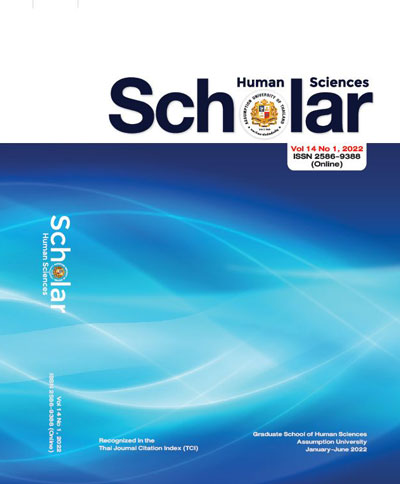A STUDY OF THE RELATIONSHIP BETWEEN INSTRUCTORS’ PERCEPTION TOWARDS PRESIDENT’S TRANSFORMATIONAL LEADERSHIP AND JOB SATISFACTION IN PU’ER UNIVERSITY YUNNAN
Keywords:
Instructors’ Perception; President Transformational Leadership; Job Satisfaction.Abstract
This study was a quantitative study to determine if there is a relationship between the instructor’s perception towards president transformational leadership and job satisfaction in Pu’er University Yunnan Province, China. There were three research objectives in this study: (1) to determine the instructor’s perception of the importance of the president’s transformational leadership, (2) to determine the instructors’ level of Job Satisfaction in Pu’er University Yunnan Province, China, and (3) to determine if there is a relationship between instructor’s perception towards president transformational leadership and job satisfaction in Pu’er University Yunnan Province, China.
References
Avolio, B. J, & Bass, B. M. (1991). The full range of leadership development: Basic and advanced manuals. Binghamton. NY: Bass. Avolio & Associates.
Bass, B. M. (1981). Stogdill s handbook of leadership: Theory and research. (2nd Ed.). New York: Free Press.
Bass, B. M. (1985). Leadership and performance beyond expectations. New York: The Free Press.
Bass, M & Avolio, B. J. (1994). Improving organizational effectiveness through transformational leadership. Thousand Oaks, CA: Sage.
Bass, B.M. and Avolio, B.J. (1996), Manual for the Multifactor Leadership Questionnaire. Mind Garden, Palo Alto, CA.
Bass, B.M. and Avolio, B.J. (1997), Full Range Leadership Development: Manual jbr the Multifactor Leadership Questionnaire, Mind Garden, Redwood City, CA
Bass, B.M., Avolio, B.J. Jung, D.L and Berson, Y. (2003),” ‘Predicting unit performance assessing transformational and transactional leadership, Journal of Applied Psychology, Vol. 88 No. 2, pp. 207-18.
Bono, J.E. and Judge, T.A. (2004), Personality and transformational and transactional leadership: a meta-analysis: Journal of Applied Psychology, Vol. 89 No. 5, pp. 901-10.
Bolman, L. G., & Deal, T. E. (1995). Leading with soul: An uncommon journey of spirit. San Francisco: Jossey-Bass.
Boone, L., & Kuntz, D. (1992) Contemporary marketing. Texas: Dryden Press. Burns, J. M. (1978). Leadership. New York: Harper & Row, Publishers.
Camp, D. J. (2002). Considering spirituality: Its promise and purpose. Frontiers of Health Services Management, 18(4),33-35.
Elgin, D. (1993). Awakening earth: Exploring the evolution of human culture and consciousness. New York: Morrow and Co., Inc.
Feng, J.Y. (1997), “The research about learning organization and leadership to the influence of high technology industry employee’s work stress and satisfaction C unpublished MS diesis. National Cheng Kung University, Taiwan.
Fink, A. (1995), How to analyze survey data. California: Sage
Graen, G., & Cashman, J. (1975). A rule-making model of leadership in formal organizations: A developmental approach. In J. G. Hunt & L. L. Lawson (Eds.), Leadership frontiers.
Kent, OH: Kent State University Press.
Graen, G. B., Novak, M, & Sommerkamp, P. (1982). The effects of leader-member exchange and job significant on productivity and satisfaction: Testing a dual attachment model. Organizational Behavior and Human Performance, 30
Graen, G., & Scandura, R. A. (1987). Toward a psychology of dyadic organizing. Research in Organizational Behavior, 9, 175-208.
Gracn, G. B. & Uhl-Bien, M. (1991). The transformation of professionals into seljmanaging and partially self-resignifications contributions: Toward a theory of leadennaking. Journal of Management Systems, 5(3), 33-48




